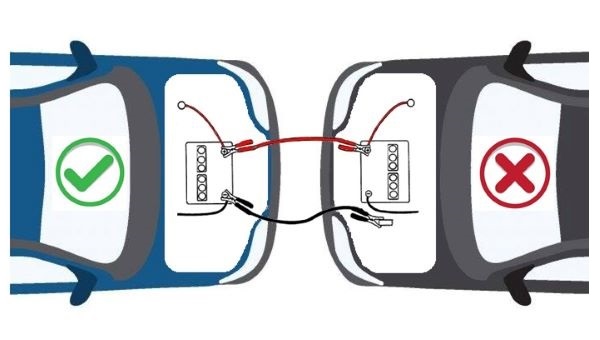Jump-Starting the vehicle
Jump-start is the process when a vehicle with a good battery is used to start the vehicle with a discharged or “dead” battery. Since starting the engine requires a large amount of electricity, the started vehicle can put a load on both vehicles. When the engine is started, the discharged battery has a low voltage. This causes the alternator on the utility vehicle to be under heavy load and to send maximum charging current. But as soon as the start is complete, the voltage spikes and is potentially high enough to damage electronic components in both vehicles. The same voltage spike can occur when jumper cables are disconnected.
Another risk is overheating and damaging the alternator on a started vehicle. Due to the increasing number of electrical devices on vehicles, today’s alternators are more powerful. However, a discharged battery can push the alternator into a dangerous operating zone. Due to the risk of damaging the electronics and alternator, many vehicle manufacturers do not allow jump-starting. They now recommend secondary charging the battery or replacing it with a charged one.
If you decide to jump-start the vehicle, always read the owner’s manual for both vehicles and follow their starting instructions. Never attempt to jump-start a frozen battery. It is usually best to allow 5 to 10 minutes for the frozen battery from the other vehicle to charge after connecting before attempting to start the vehicle. Once the dead vehicle’s engine starts, let both vehicles idle for a while. Do not switch off the vehicle with a discharged battery, as it takes a long time to recharge. Before removing the jumper cables, it is advisable to switch on additional consumers, for example, headlights, on both vehicles to protect the alternator. This allows any sudden increase in voltage due to a sudden decrease in alternator load to be absorbed. Another method to reduce the risk of damaging sensitive electronic devices is to use jumper cables with built-in surge protection.






